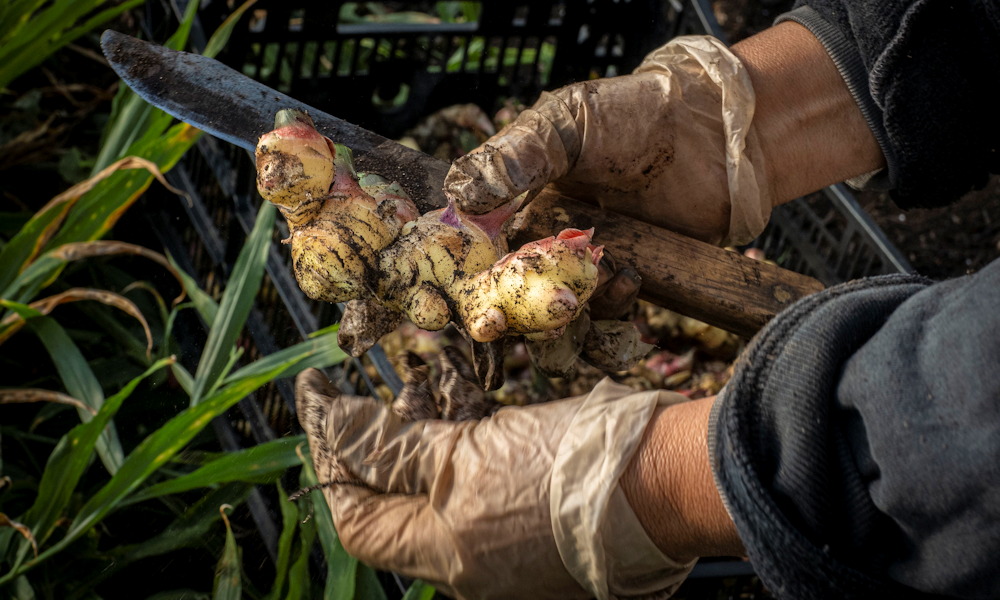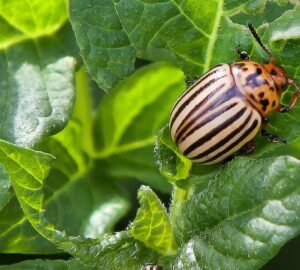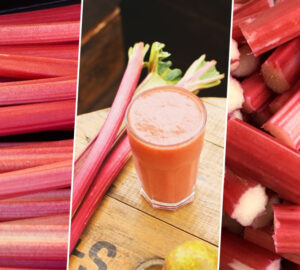Growing ginger is an exciting endeavor for home gardeners looking to add an exotic yet highly practical crop to their gardens. While ginger is native to warmer climates, it can thrive in a greenhouse, providing gardeners with the opportunity to grow their own fresh supply. This article will explore the best methods for cultivating ginger at home, the challenges of growing it outdoors, and tips for maximizing your greenhouse environment. Let’s dive into the rewarding process of growing ginger in your backyard!
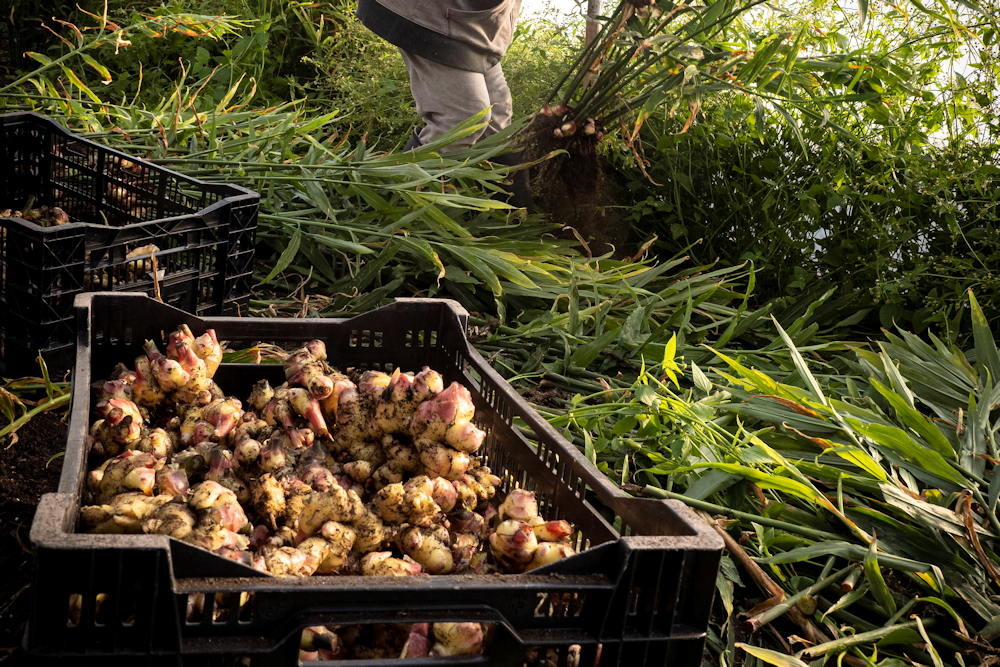
The Unique Charm of Ginger: Why Grow It?
Ginger (Zingiber officinale) is well-known for its culinary and medicinal uses, from spicing up dishes to helping with digestion. Growing your own ginger means having access to this versatile root year-round. While commonly thought of as an ingredient in Asian cuisine, ginger’s uses have expanded globally, making it a valuable addition to any gardener’s crop list. Whether for making fresh tea, adding zing to stir-fries, or using in home remedies, ginger is a rewarding plant for both beginner and experienced gardeners alike.
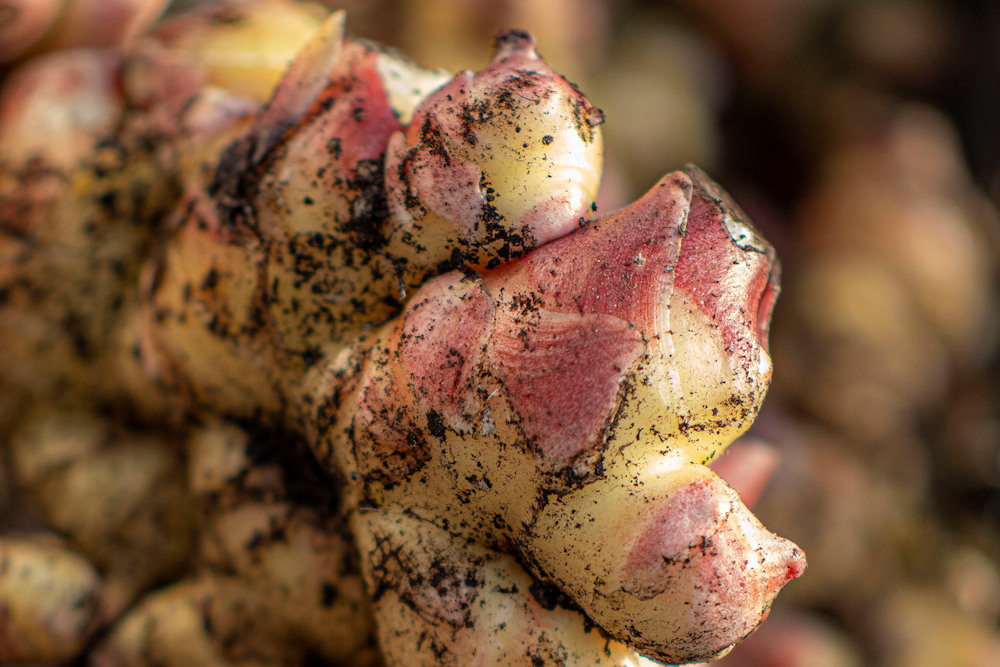
Greenhouse or Garden: Where Ginger Thrives Best
Ginger thrives in warm, humid environments, typically growing in tropical or subtropical regions. For gardeners living in cooler climates, this poses a challenge. However, growing ginger in a greenhouse provides the perfect controlled environment. In such settings, you can regulate the temperature and humidity, ensuring ginger gets the warm, damp conditions it craves.
Outdoors, ginger needs rich, well-draining soil, plenty of moisture, and a long growing season, free from frost. It’s also important to plant ginger in a location that gets partial shade, as direct sunlight can scorch the leaves. However, in areas with colder climates or short growing seasons, keeping ginger outdoors can be tricky, so greenhouse cultivation is often the better option.
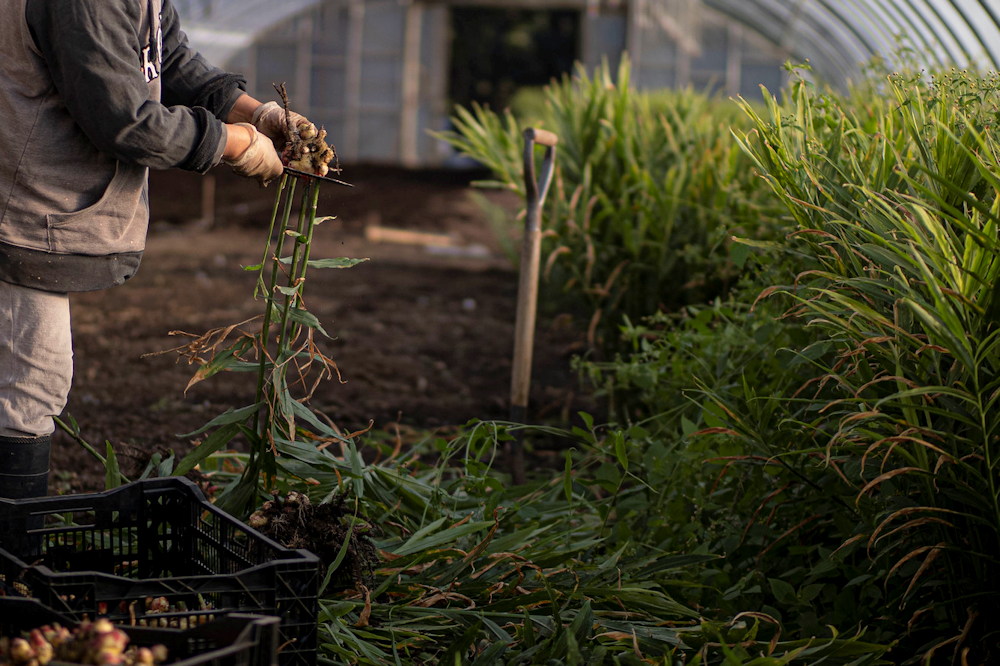
Step-by-Step Guide to Growing Ginger in Your Greenhouse
- Choose Your Rhizome: Start by selecting a fresh ginger root (rhizome) from a local market or nursery. Look for pieces with multiple “eyes” or growth buds, which will sprout into new plants.
- Prepare the Soil: Ginger thrives in loamy, well-draining soil that is rich in organic matter. Use a mix of compost, garden soil, and sand to create an ideal growing medium. Ginger prefers slightly acidic to neutral pH soil.
- Planting Time: In a greenhouse, ginger can be planted at any time when the temperature is consistently between 25-30°C (77-86°F), meaning you can even start cultivation in winter if the proper conditions are maintained.
- How to Plant Your Ginger Rhizome: Plant your ginger rhizome horizontally, just below the surface of the soil. Ensure the “eyes” are facing upwards. Water the soil lightly but consistently, keeping it moist without waterlogging.
- Optimal Conditions: Maintain a steady temperature between 25-30°C (77-86°F). In a greenhouse, it’s easier to maintain this warmth, especially during colder months. Humidity levels should be kept high, as ginger requires consistent moisture.
- Fertilizing and Maintenance: Use organic fertilizers rich in potassium and phosphorus to promote rhizome development. Keep an eye on pests such as aphids and spider mites, which can occasionally be an issue in greenhouses.
- Harvesting: Ginger takes approximately 8-10 months to mature. You can begin harvesting small portions once the plant is well-established, but for a larger yield, wait until the leaves turn yellow and die back before digging up the rhizome.
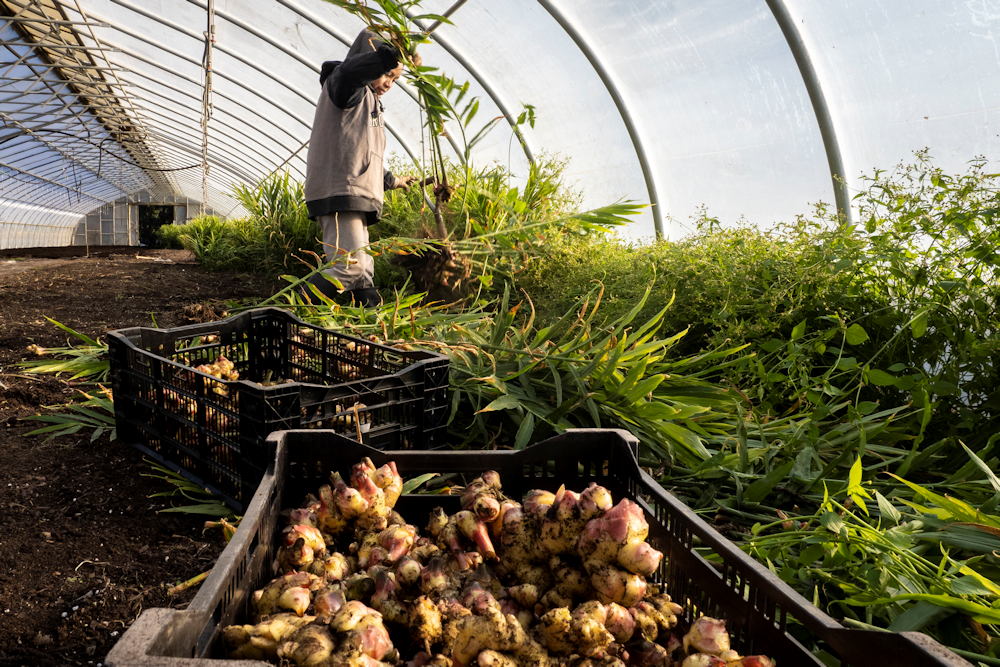
Challenges of Growing Ginger Outdoors
For gardeners who wish to grow ginger outdoors, timing is everything. In regions where winters are cold, ginger must be planted as soon as the last frost has passed. The growing season may be cut short if temperatures drop early in the fall. In such climates, container gardening can be a good alternative, allowing you to move the plants indoors when necessary.
However, in warmer regions, ginger can thrive outdoors with careful watering and protection from extreme sunlight. Be sure to mulch the soil to retain moisture and provide consistent watering to ensure a healthy crop.
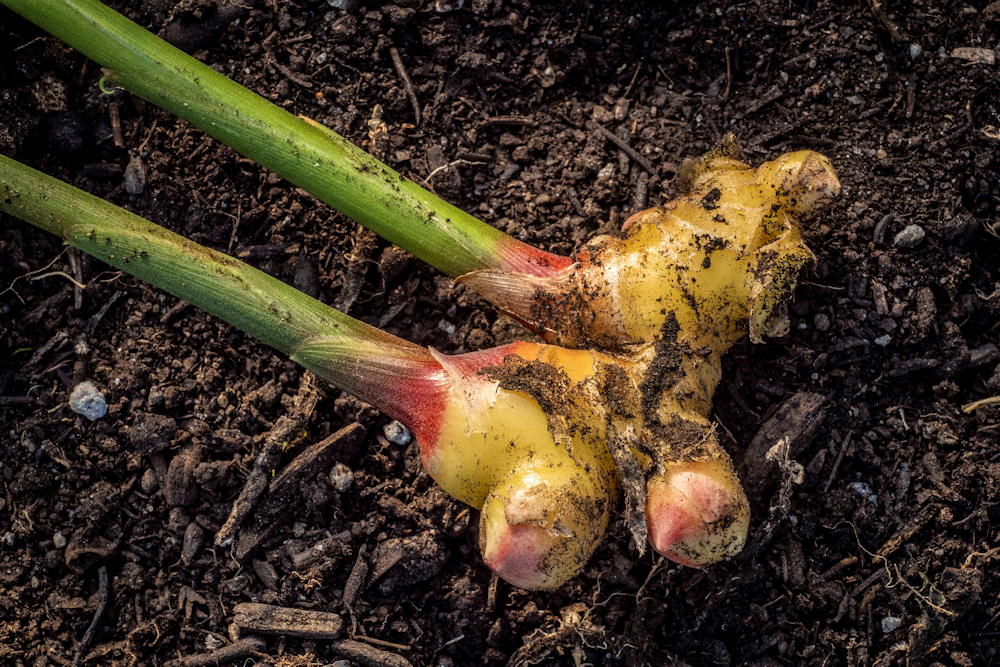
Real-Life Example: Ginger at Sang Lee Farms
Ginger cultivation isn’t limited to tropical regions or home greenhouses. Sang Lee Farms, a family-run farm located in Peconic, New York, has successfully incorporated ginger into their range of specialty crops. Despite the cooler climate of Long Island, their greenhouse setups have allowed them to grow ginger alongside Asian cabbages, greens, and radishes. This demonstrates how, with the right techniques and environment, growing ginger can be a feasible and fruitful venture, even in less-than-ideal outdoor conditions.

Tips for Ginger Cultivation Success
- Container Gardening: If you don’t have access to a greenhouse, growing ginger in containers is a great alternative. This allows you to move the plants to warmer or more suitable areas as needed, offering flexibility in colder climates.
- Patience Is Key: Ginger is a slow grower, often taking up to a year to mature fully. Patience is required, but the reward of fresh, home-grown ginger is worth the wait.
- Preventing Overwatering: Ginger is prone to root rot if left in waterlogged soil. Make sure your greenhouse or containers have proper drainage, and water lightly but frequently.
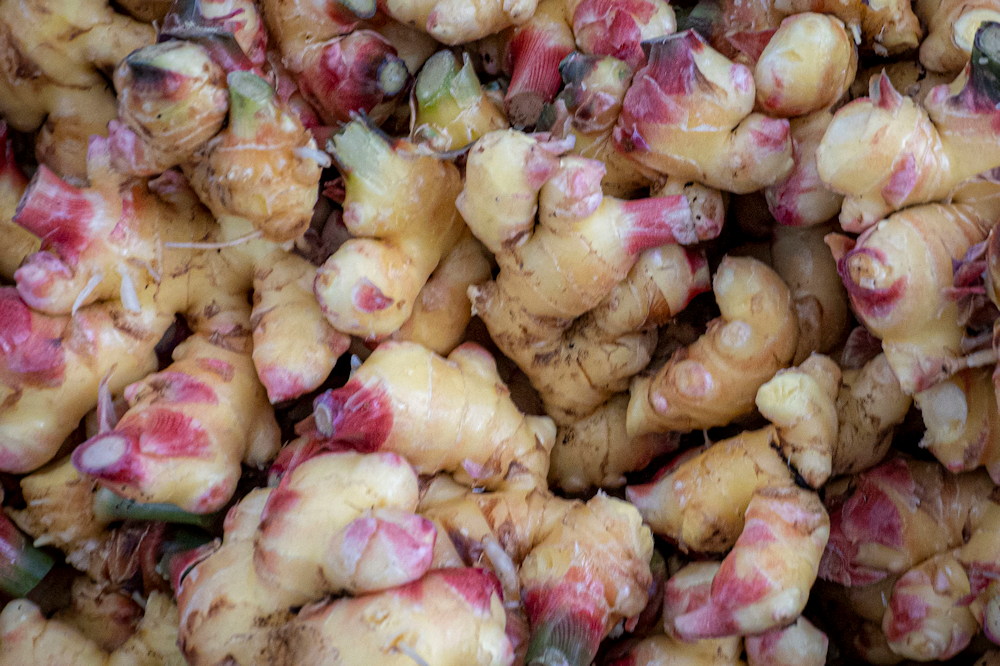
Conclusion: The Greenhouse Advantage
Greenhouse cultivation of ginger opens the door to growing this warm-weather plant in cooler climates, allowing gardeners everywhere to enjoy the unique flavor and benefits of fresh ginger. Whether you grow it for its culinary uses or its health benefits, ginger is a rewarding crop that brings a touch of the tropics to your home garden. By providing the right conditions and a bit of patience, you too can successfully grow ginger, just like the expert farmers at Sang Lee Farms.
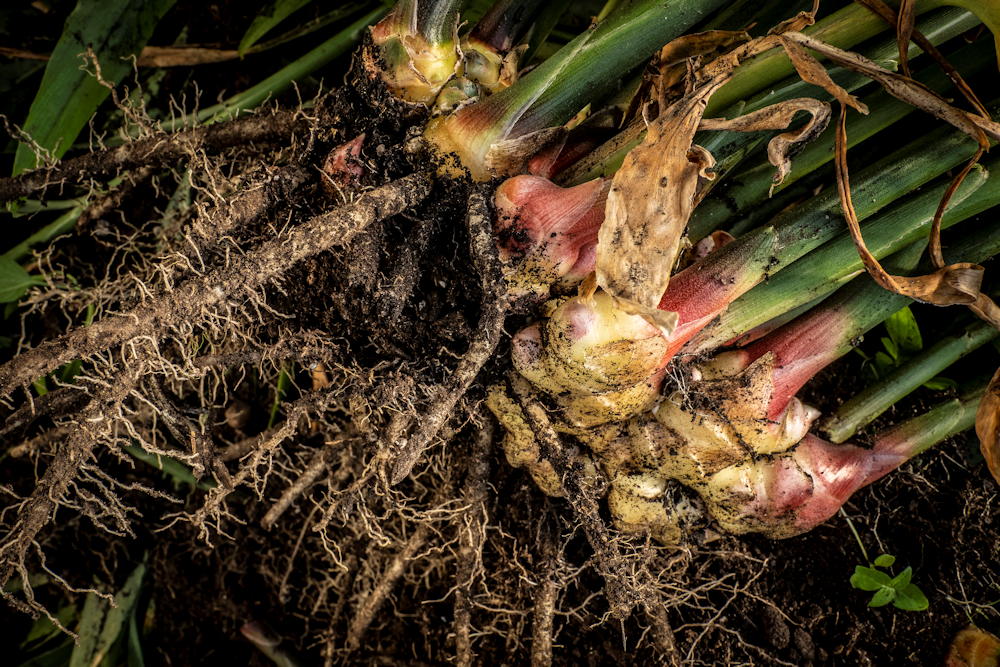
Whether you’re a seasoned gardener or a beginner, growing ginger offers both a challenge and an opportunity to experiment with greenhouse gardening, proving that with the right tools and techniques, almost anything is possible in the world of horticulture.



